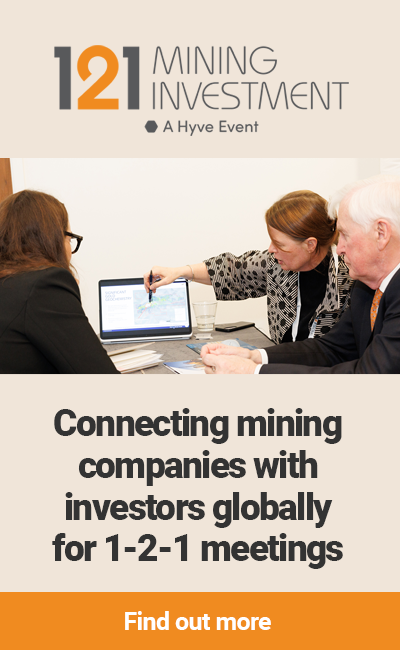This article is a transcript from our Assay Live webinar series. It was recorded live in February 2022 and features Nicholas Boyd-Mathews, Chairman, Executive Director, & CIO, Eden Partners; Andrew Sparke, Executive Chairman, QMines Limited; and Todd Warren, Partner & Head of Research, Tribeca Investment Partners
The mining industry is set to play a critical role in our global sustainable future; however, the contribution of mining to decarbonization is still misunderstood by the greater public. What are some of the ESG strategies that are currently being adopted by the mining industry?
Andrew Sparke: Since we acquired our Mount Chalmers project 12 to 18 months ago, we’ve been slowly progressing several initiatives to try and develop our operation in a sustainable way. This includes using completely renewable energy onsite to house our staff and contractors, and power all our operations.
We’ve also just entered into a renewal fuels agreement. We identified quite early on that our biggest source of carbon emissions was from diesel used for drilling. The renewable fuels agreement will initially offset our diesel use by about 20%, but we’ll look to transition that to 50%, then ultimately 100% as time goes on. We’re doing a lot of simple things like procuring goods and services locally, so we don’t have a big fly-in, fly-out workforce. There’s lots of simple initiatives out there and lots of great technologies that companies can adopt to improve their ESG practices.
Currently 66% of our board is independent. We’ve got female representation from the top to the bottom of our organization. And we’re doing a lot of little things like sponsoring local soccer teams in the region and working with the community on how to develop this collectively.
Nicholas Boyd-Mathews: We are a natural resources fund, what we tend to do is we influence, we’re an active fund manager.
70% of our investments will be in producing assets, and then we’ll have up to 30% of what we call special situations, which is from exploration through to development, and then hopefully onto production. That’s the area where we struggle with the ESG element. 12 months ago, when I had meetings with companies to talk about what was their ESG, what were they doing about sustainability, it was blank faces.
There are companies who provide them with a pathway to adopt ESG criteria. The biggest challenge with these scores now is there are so many rating agencies coming up with different scores and results. Long term, we’re going to find there will be a convergence, and there will be a standardization of those agencies, as we get one rating that fits all, but that’s probably two or three years away.
But as a fund manager, now you’re looking and going, “Is there a path? Is there a roadmap? Is this company, and its management, adopting the governance that will be sustainable?”
Todd Warren: The reality of the situation is that companies are recognizing that they’re otherwise not going to be able to raise money, equity or debt. From the investor perspective, I think the ESG discussion is becoming more nuanced. Third party ESG analysis is disparate. There needs to be a more qualitative angle to it that actively investigates what are the issues here to differentiate the good, the bad, and the ugly.
How do you analyze these benchmarks that companies set forward or the statistics that an ESG service puts out about a company?
Nicholas Boyd-Mathews: We don’t use a benchmark, but we’re an absolute return fund, so we’re active and uncorrelated. And if we were correlated, it would be about 50%. In the actual Refinitiv Sustainability Index, there are nine companies. So, it’s not possible to construct a portfolio that’s diversified enough to be risk adjusted returns that would satisfy any fund manager with just nine holdings.
Todd Warren: The divestment, for example, of fossil fuel assets does not solve anything. The asset doesn’t go away. If we shift the ownership of these assets from public markets, where they sit today, to invariably private equity or state-owned entities, who either don’t, A, have a responsibility to shareholders, or B, care about what the impact is on local communities and indeed the world’s carbon footprint, then the problem is not being solved.
What are some of the key criteria that you look for? What do you think the primary focus should be for the executive and the board of the company to be focusing on, to get the attention of investors on the ESG front?
Todd Warren: It needs to be broad-based. The reality is now that there still remains a very heavy focus on environmental factors, and carbon is a case in point, of Scope 1, 2, or even 3 emissions and how companies are being pressured to reduce that, which is obviously a good outcome. There is nothing wrong with that.
The world needs an awful lot of any number of various commodities to decarbonize. Yet the mining industry is facing increasing difficulties and challenges with regards to resource nationalization.
Andrew Sparke: We’re pleased to say now we’re one of only three ASX-listed resource companies that is carbon neutral today. But as we’ve evolved, as we’ve gone through implementing various strategies, we’ve started to put a lot more emphasis on the social side and certainly the governance.
Are fund managers willing to accept lower returns as companies pursue their ESG requirements? Do ESG requirements necessarily mean lower returns?
Nicholas Boyd-Mathews: The reality of it is that for actual ESG funds, there aren’t lower returns, and that’s been raised a lot from a European perspective. Most of the actual ESG funds provide just as good returns as non-ESG funds. I think that most ESG fund managers are willing to accept lower returns for a better world, for a better climate.
Andrew Sparke: With companies looking at these strategies and implementing them now, I’d like to think they’re more forward-thinking about the impact of their activities on a wider group, not just their employees and shareholders.
Those who are starting to challenge a lot of those conventional mining practices will be rewarded. The other side of this too, is the fact that what is the cost of not doing this? I think those that don’t get on board will start to see increased costs as time goes on.
I’m hearing that the JORC Code is looking to implement an if-not why-not sort of clause in their upcoming updates. There will be a regulatory cost I would think, as time goes on.
As we get closer to those key milestones of 2030 and 2050, where a lot of these businesses are committing to decarbonizing, there will be an absolute rush for all sorts of technologies, costs will potentially rise as we get in. Particularly on the offset side, we’ve seen over a hundred percent increase in carbon offsets over the last 12 months. We need to balance the reward with what’s the cost of not doing it.
From an investment perspective, what credit do you place on Scope 3 emissions reduction?
Todd Warren: Scope 3 has obviously been a difficult one for many, given the inability to some degree to control your customer’s consumption of your product. I guess one person’s Scope 3 is another person Scope 1, by definition. So, in effect, if everyone is making the significant steps to address their Scope 1 and/or 2 emissions, they are going to be reducing someone else’s Scope 3.
Scope 3 has been a difficult one for many companies to incorporate into their broader carbon emissions reductions. That said, it’s more relevant to some industries than others – obviously the coal mining industry or the oil and gas industry is far more exposed to something like a Scope 3 emission target or reduction target.
There’s no shortage of uranium explorers anywhere in the world and uranium captures its degree of headlines
Every renewable energy technology today requires minerals. What type of messaging responsibility around this do you believe sits with funds maximizing ESG, not only to clients, but to the market?
Todd Warren: I do think that the point is a very relevant one about the divestment of assets versus getting inside the tent and managing those assets more readily with management teams. If you look at the Biden Administration in the U.S., who’ve come out and created a list of so-called critical minerals as long as your arm, they make it very difficult for the world to develop new mines in the U.S., which is kind of ironic.
Governments need to be cognizant of the fact that we need more and more of these commodities and having a manageable framework in which companies can develop their assets without risk of nationalization or a shift of the goal post.
Do you find that this kind of nationalization has become a bigger issue as we go on, especially with supply chain issues?
Todd Warren: I think in the COVID-19 environment, governments have become very internally focused. 40% of the world’s copper comes out of Chile and Peru, and with a massive change going on in the political spectrum over there the Chilean country is now going through a complete rewrite of their constitution.
So, Chile sits on one of the world’s greatest resources of copper in the ground. And yet, if you are a company looking to invest significant amounts of capital to extract that copper, you’re going to have second thoughts if you feel that there is a risk of A, your returns, but also B, your ability to hang onto those assets.
Nicholas Boyd-Mathews: We find as a European fund, we’ve got this unique selling proposition that we are a team based in Western Australia, in Perth, and if anything, we want to look to invest in things in our own backyard.
How do you break down your focus, whether it’s commodity specific or geographically focused?
Nicholas Boyd-Mathews: We’ve got about 10% in copper at the moment, and we’d like a lot more. We focus on Australian companies listed on any recognized investment exchange around the world, but generally, we’ll look at ASX listed first, that have projects within Australia from a geographical point of view. Then once we’ve run out of stocks to select, we’ll look to ASX companies that have got exposures to mine sites.
Todd Warren: We’ve been quite a vocal supporter of the nuclear power industry and its need, we need to support the whole decarbonization transition. Uranium is a function of the fact that it’s obviously a low or zero-carbon-footprint baseload power provider.
There’s no shortage of uranium explorers anywhere in the world and uranium captures its degree of headlines, but it’s hard to believe that we’re now 11 years since Fukushima and the very negative headlines that brought to the nuclear power industry, but we’re now finally starting to see the conversation shift.
Looking at Australia specifically, do you think the Australian mining industry is likely to adopt Green Revenue Reporting such as within the EU taxonomy?
Nicholas Boyd-Mathews: I think eventually, yes, would be the answer. ESG principally came from Europe, from SFDR. We’ve got to bear in mind that in Australia, there is no legislation that says that you must adopt a sustainable pathway now.
Are there key policy settings that you’d like to see from the government in this regard?
Andrew Sparke: We’re certainly seeing a lot of investment from government around Queensland. And we’re seeing a lot of these new renewable energy zones, which are really starting to fast-track some of this investment into the space. But I think ultimately to make this transition we need some real leadership from the top.
What is the way forward for miners and investors to bring these ESG discussions to the ground and to get things moving? What are some of the key things that we need to see addressed and the key kind of policies put in place, all of it? What do you need from each of your perspectives?
Andrew Sparke: With QMines, we started with a carbon audit and that’s how we started to work out what were the best strategies that we could implement to transition our business.
There are about 350 businesses at the moment that are certified carbon neutral under Climate Active, including us. That’s the Australian government stamp for carbon neutrality. That’s an independent process that allowed us to do a carbon audit and really understand what parts of our business were emitting the most carbon and how to combat it.
Nicholas Boyd-Mathews: It would be nice to see governments over here, whether that’s local or federal, provide some sort of incentive for companies, and that can be through helping with cost of implementing a roadmap.
Todd Warren: I would say a great lesson for the junior end of the mining spectrum is, you need to get all your practices and your policies and the way you measure your environmental footprint together first. There are more technology platforms to make that easier nowadays too, but if you entrench those behaviors early, it makes it far easier to encourage those to remain as you grow and mature as a company.
Do you think there’s more communication and PR that needs to be done just about the mining industry, and why it’s needed for a carbonized future?
Todd Warren: More needs to happen because there is still a perception there that all mining is bad, despite the fact that they use their mobile phones and don’t quite understand where the component parts come from.
We’ve seen several policies brought in place, whether it’s in North America or the EU, with regards to the sourcing of some of the key decarbonization enabling commodities, and that will continue to occur. It’s clearly of increasing importance that we diversify our source of commodity supply as well.












